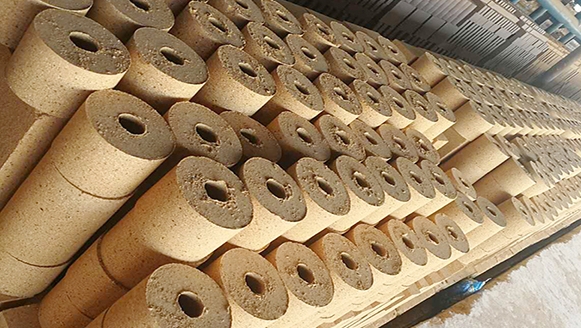- 17
- Nov
Use conditions of refractory bricks for kiln
Use conditions of refractory bricks for kiln
Under normal circumstances, the main purpose of refractory bricks for kiln lining is to improve the efficiency of the lining, rather than delaying production due to the damage of refractory bricks during processing. Therefore, the refractory bricks for the furnace should be selected according to the life and efficiency of the furnace. Refractory brick is an inorganic non-metallic material with a fire resistance limit greater than 1580°C. The high temperature and no-load stability of refractory bricks, that is, the characteristics of not melting and softening under high temperature and no-load standards, is called refractoriness, which expresses the basic characteristics of refractory bricks.
Refractory bricks, as the key material for high-temperature furnaces and other thermal facilities, can withstand various physical and mechanical effects. Therefore, the following basic standards must be met:
(1) In order to meet the requirements of high temperature use, it should have the characteristics of not softening and not melting at a sufficiently high temperature.
(2) It can withstand the load of the furnace and the stress that often acts during the operation, does not lack structural strength, and does not soften, deform and collapse at high temperatures. Generally expressed by load softening temperature.
(3) At high temperature, the volume is stable, and the kiln body or pouring body will not collapse due to excessive expansion of the product, or cracks due to excessive shrinkage, thereby reducing the service life. Generally consider the coefficient of thermal expansion and reheating shrinkage (or expansion).
(4) Refractory bricks are greatly affected by furnace conditions. Due to the positive change of temperature and uneven heating, the furnace body is easily damaged. Therefore, it is required to have a certain degree of thermal shock resistance.
(5) In the course of use, refractory bricks are often oxidized by liquid solution, gaseous or solid organic matter, causing the product to be corroded and damaged. Therefore, the product is required to have a certain degree of corrosion resistance.
(6) In the application process, refractory bricks are often corroded by high-speed flowing flames and dust, corrosive corrosion of liquid metal and molten slag, and collision damage between metal and other raw materials. Therefore, it is required to have sufficient strength and corrosion resistance.

